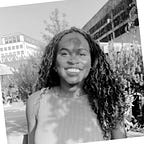Black is Beautiful: A trip to the National Museum of African American History in DC
November 4th 2008.
My mum stayed up all night waiting for the election result.
I remember I opened the door to see her crying in the early hours of the morning.
“He did it”, she whispered.
Barack Obama became the first African-American to be elected President of the United States of America.
At the time, I thought they were just tears of joy.
I know now they were tears that were heavy in history, in sacrifice, in grace and resilience.
They were tears that marked the legacy of African American’s fight for freedom. For justice. For humanity.
The National Museum of African American history in Washington DC houses an expansive collection of sources and stories that paint a descriptive picture of the complexity of African American history over the last 400 years.
The extraction of Africans played a pivotal role in the economic progression of most developed countries today. Expanding industries and global trade arose as a result of the exploitation of African people who were displaced in North America and the New World to farm raw materials like cotton, live on plantations and be sold and marketed like cattle for the profit of others.
I spent over three hours there reading and processing the winding path that African American’s have walked as they helped to build, with blood, loss and demonstration, the United States of America.
It would be easy to be overwhelmed by the fierce fight that has plagued a group of people who arrived without choice in ships with cabins that were three feet high.
It would be easy to be feel powerless looking at images of black bodies hanging on Southern trees encircled by smiling men.
It would be easy to cry at the hardship that each generation faced to gain access to a nation that they built.
But, whilst respecting that this painful legacy persists, I want to focus on the themes that reflect the strength, wisdom and grace embedded in African American history.
Before the slave trade, complex societies rich in resources and led by leaders endowed with entrepreneurial spirit were already established in Africa.
The extraction of slaves tore communities apart and heightened mistrust as millions of Africans were shipped to North America and the New World.
Yet, as an archive in the museum wisely reminds us: ‘the black revolutionary spirit landed when the first slave ships reached the shore.’
At every single hurdle, African Americans innovated and adapted to the life that was chosen for them. Prior to the establishment of slave laws during the first few years of the slave trade, African slaves, English servants and native Americans lived together along the East Coast of America. Their colourful lifestyle and interracial cultural activities provoked stricter slave laws where slaves’ human rights were neglected and families were separated.
Colonists’ fear of the uprising of those they perceived to be lesser than them provoked the establishment of these strict laws.
But, over the course of history the dehumanisation and disregard for enslaved African Americans did not stop their determination to cultivate their own culture and to invest in their communities.
Churches were established. Children were religiously affirmed and inspired to block out the systemic obstacles they faced and to stand strong in their identity, knowledge and power.
During the exhibition, I tried to find the light in all of this darkness and focused on the strength, craftmanship and uniqueness of the blend of African and American cultures.
So, I only cried once.
It wasn’t when I read about the lives lost on the slave ships, the brutal beatings during the political protests of the Civil rights movements or the massacre of Tulsa.
I cried, just like my mum did, at Barack Obama’s inauguration.
The inauguration of a black man in a country with such a divisive history was a symbol for anyone who ever felt different.
“The Negro struggle in America is only a microcosm of the struggle of new countries all over the world.”
Countries all over the world hold individuals that fear difference and seek comfort in maintaining a majority to keep all ‘others’ at bay.
Despite that, we see in African American culture, Hispanic American culture, Asian-American culture and other minority cultures both in America and globally that the amalgamation of culture produces beautiful results.
When I first arrived in the USA, I flinched at the casual use of ‘black’: ‘black people’, ‘black neighbourhoods’, ‘black music.’
Yet, I recognise that in America, the ability to claim something as black acts as a means of ownership: a portrayal of strength for a community who has a history of being owned.
The system in America, as evidenced by yet another not guilty charge, fights against difference because it fears the full potential of its diverse communities.
Owning your blackness, owning your difference, owning your culture and accepting that of others seems to be at the core of African American history.
In all of the adversity there has been such excellency.
I’m not African-American but my heritage is both African and American.
Learning and absorbing the stories of pioneers, leaders and avant-garde revolutionaries is shifting me to be more assertive in my own identity and in my own blackness.
A lot of people fought for me to be able to walk freely on the streets of Washington DC.
